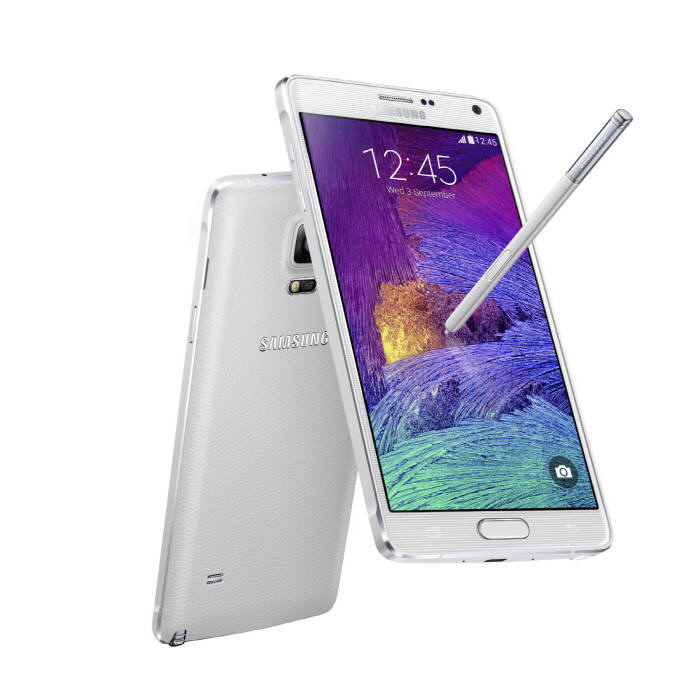Samsung `Galaxy Note 4S-LET` and LG `G Flex 2` fight for pride over performance.
The telecommunication and cell phone industry began to compete with one another in 3-band Carrier Aggregation (CA) marketing. With the LG G Flex 2 scheduled to be released on January 30, the Samsung Galaxy Note 4 S-LTE is forecast to be launched earlier than that. Manufacturers are forecast to fight for pride over the performance of terminals and mobile carriers are expected to fiercely compete with one another in marketing to attract customers.

According to industry insiders on January 18, the Samsung Electronics Galaxy Note 4 S-LTE will be released as early as this week. As it was already unveiled at the end of last year, insiders said, the company would skip the preliminary media event and make a simple announcement instead. On January 22 LG Electronics will hold the G Flex 2 media briefing and the competition will heat up further.
Once the phones are released, mobile carriers will begin to compete with one another over commercialization in earnest. Captivating the heart of customers soon after the release of service will be more important than winning the title of ‘being the first in the world to commercialize,’ about which there is a legal dispute.
The competition over commercialization of the 3-band CA offers a lot for everyone to see as there have been controversies. For starters, the performance competition between the Galaxy Note 4 S-LTE and G Flex 2 is the main focus. Both products meet the Cat. 9 specifications that can produce up to 450Mbps speed.
The Galaxy Note 4 S-LTE comes with the Exynos 5433 mobile application processor (AP), which SEC developed on its own, whereas the G Flex 2 is the first in the world to have the Qualcomm Snap Dragon 810 AP. The chip is key to implementing 300Mbps, the maximum speed the 3-band CA can currently realize and enhancing the performance of application processing.
How many subscribers each of the top 3 mobile carriers can attract also draws public attention. The broadband LTE-A (225Mbps), three times faster than LTE, absorbed a considerable number of LTE customers in just 6 months thanks to the Galaxy Note 4, the Galaxy S5 broadband LTE-A and G3 Cat. 6, the main models of SEC and LGE. In the 3-band age, another round of marketing battle over ‘speed’ will be fought by mobile carriers.
SK Telecom already launched the ‘World’s first 3-band LTE-A commercialization’ TV ad amid considerable controversy. KT also inserted the ‘4 times faster LTE-A’ phrase in its TV ad. LG Uplus is also preparing advertising and various marketing events in time for the release.
“We are planning to conduct marketing that emphasizes utilization, e.g. video and music service with improved picture quality and sound quality,” said a KT insider. “We will concentrate on enabling customers to actually experience the enhanced mobile speed.”
The industry consensus is that competition among mobile carriers is necessary, but consumer satisfaction is the most important. 300Mbps is the theoretical maximum speed when one terminal sends and receives signals to and from one base station where the signals are strong. As the number of terminals increases, the speed will slow down in inverse proportion. Accordingly, it has been pointed out that excessive speed marketing should be avoided, and more efforts must be made to expand service zones by installing more base stations and optimize the system.
“As there are insufficient base stations in the 2.1㎓ band, we must install more base stations to expand the 3-band CA nationwide,” said a communication equipment company insider. “Unlike software, we must install base stations and it costs a lot of money. So it will be quite some time before we can provide a truly nationwide service.”